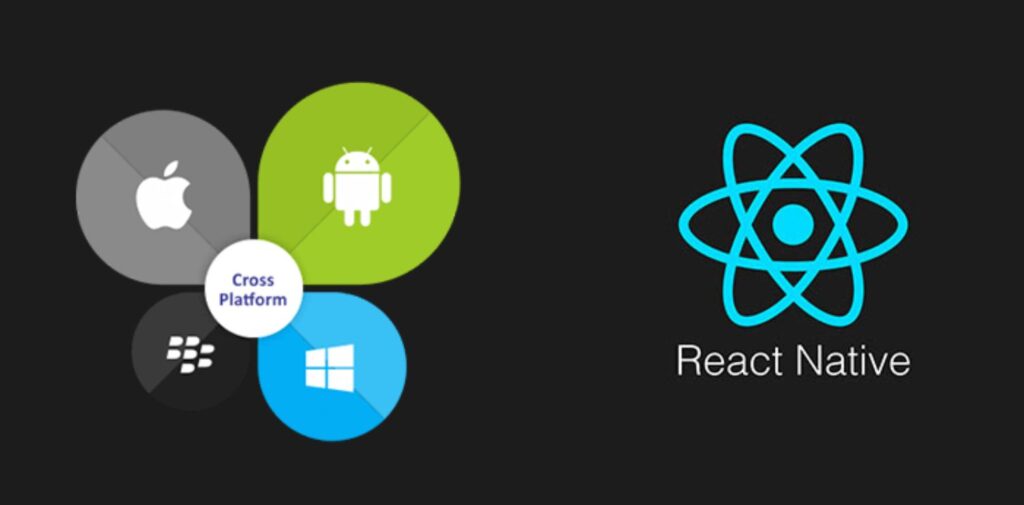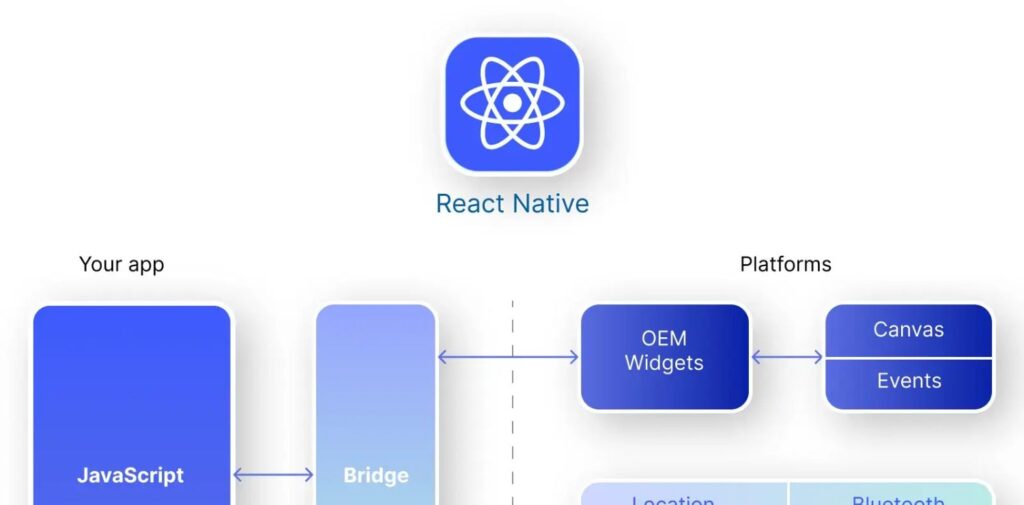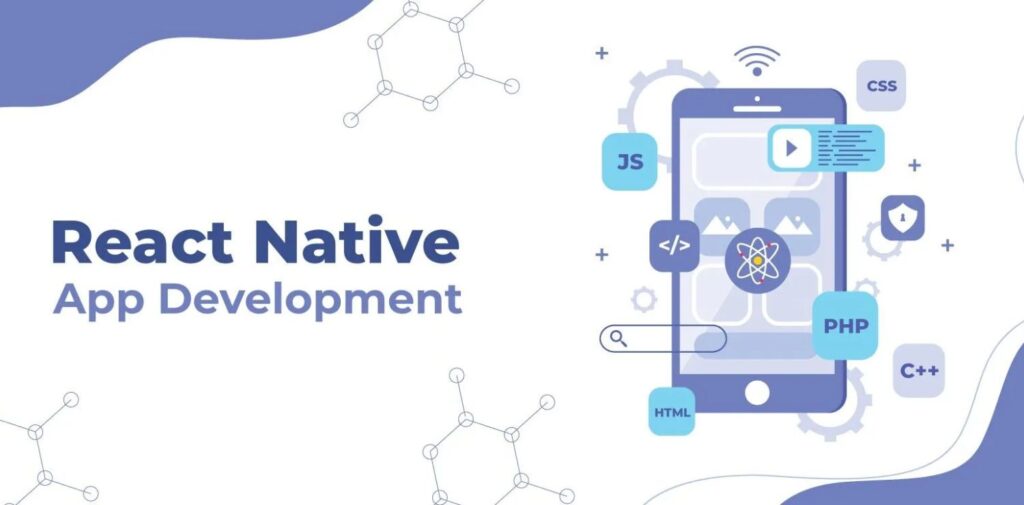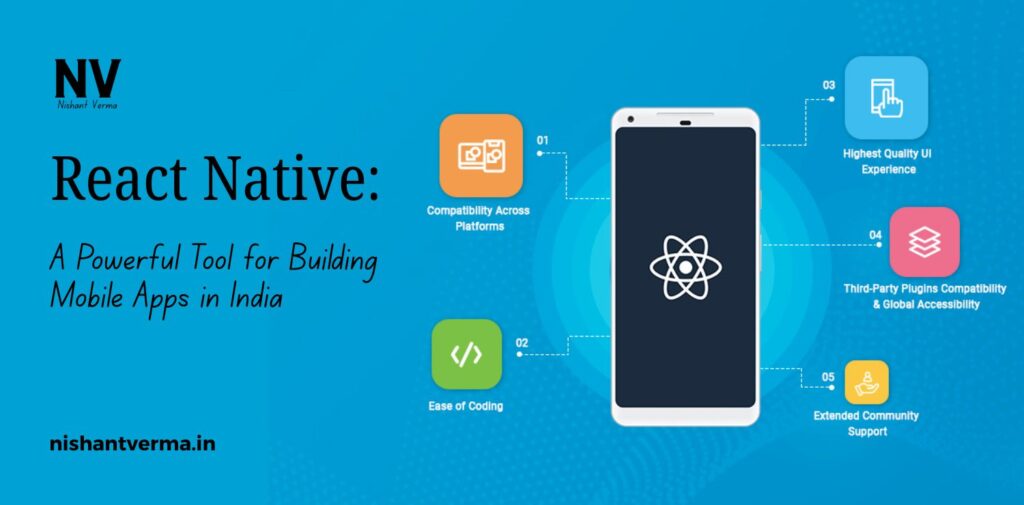In today’s fast-paced digital world, mobile applications have become an essential part of our daily lives. Whether it’s for entertainment, shopping, communication, or banking, mobile apps are the cornerstone of many services. For developers, creating mobile applications that work seamlessly on both Android and iOS platforms can be a challenge. This is where React Native comes into play. React Native is a revolutionary framework that allows developers to build high-performance mobile applications using JavaScript, making app development faster, easier, and more efficient. In this article, we will explore what React Native is, its features, and why it has become so popular, particularly in India.

What is React Native?
React Native is an open-source framework developed by Facebook (now Meta) that allows developers to build mobile applications for iOS and Android platforms using a single codebase. It combines the power of JavaScript with native components, enabling developers to create apps that are as fast and responsive as those developed using platform-specific programming languages like Swift (for iOS) and Kotlin (for Android). With React Native, developers can reuse a large portion of their codebase across multiple platforms, significantly reducing development time and cost.
The framework is built on React, which is a popular JavaScript library for building user interfaces. React Native brings the same principles of React to mobile development but with the added benefit of delivering native app performance. In simpler terms, React Native allows developers to create mobile apps that look and feel like native apps, without the need to write separate code for different platforms.
Why is React Native Popular in India?
India has a thriving tech industry, with thousands of startups and established companies focusing on mobile app development. React Native has gained significant popularity in India for several reasons.
- Cost-Effective Development: For Indian startups and small businesses, cost is often a major factor when choosing a technology for app development. React Native allows companies to write one codebase for both Android and iOS platforms, which saves both time and money. This is particularly beneficial for businesses with limited resources, as they don’t need to hire separate teams for Android and iOS development.
- Large Talent Pool: India has a large pool of talented developers who are proficient in JavaScript, the core language used in React Native. JavaScript is one of the most widely used programming languages in India, and many developers are familiar with the React library. This makes it easier for Indian companies to find skilled React Native developers, ensuring that they can build high-quality apps with ease.
- Faster Development and Updates: React Native allows for faster development cycles due to its reusable components and ability to quickly implement changes. In a fast-moving market like India, where user expectations evolve rapidly, React Native’s ability to push out updates quickly and efficiently is a significant advantage.
- Strong Community Support: React Native has a large, active community of developers and contributors, including many from India. This community provides extensive documentation, tutorials, and troubleshooting support, which is invaluable for developers. The availability of resources makes it easier for Indian developers to learn React Native and build high-quality apps.

How Does React Native Work?
To understand why React Native is so effective, it’s important to know how it works. React Native uses a concept called “bridge” to connect JavaScript code with native components (i.e., the platform-specific parts of the app). When you write an app using React Native, you’re writing most of the code in JavaScript, but the framework allows you to call native code whenever necessary for performance optimization or platform-specific features.
Here’s a simple breakdown of how React Native works:
- JavaScript Code: Developers write the majority of the app’s logic and user interface in JavaScript using React. This includes defining components, state management, and handling user interactions.
- Bridge: React Native uses a bridge to communicate between JavaScript and native code. The bridge allows JavaScript to interact with native modules written in Objective-C (for iOS) or Java/Kotlin (for Android). This allows the app to access platform-specific features, like camera functionality, GPS, and other hardware components.
- Native Components: React Native includes pre-built native components for both iOS and Android, such as buttons, text inputs, and navigation elements. These components are rendered using the platform’s native rendering engine, ensuring a smooth and responsive user experience.
- Compilation: The JavaScript code and native modules are compiled into native code when the app is run. This allows React Native apps to perform almost as well as apps built using platform-specific languages like Swift or Kotlin.
Benefits of Using React Native for Mobile App Development
React Native offers a variety of advantages, making it a popular choice among developers and businesses. Some of the key benefits include:
- Cross-Platform Compatibility: React Native allows developers to write one codebase that works for both Android and iOS, eliminating the need to develop separate apps for each platform. This reduces development time and costs while ensuring consistency across both platforms.
- Faster Development and Iteration: Since React Native uses reusable components, developers can quickly build and iterate on their apps. Changes made to the JavaScript code are instantly reflected in the app, making it easier to test and refine the user experience.
- Native Performance: Unlike traditional hybrid frameworks that rely on web views, React Native delivers a native app experience. It uses native components and communicates directly with the platform’s APIs, resulting in better performance and smoother interactions.
- Large Ecosystem and Libraries: React Native has access to a wide range of third-party libraries and plugins that can speed up development. Developers can easily integrate popular libraries for features like analytics, payment processing, and social media sharing.
- Hot Reloading: React Native supports hot reloading, a feature that allows developers to see changes in the app instantly without having to restart it. This speeds up the development process and enhances productivity.

Challenges of Using React Native
While React Native offers many advantages, it’s not without its challenges. Some of the common issues developers face when using React Native include:
- Limited Native Modules: While React Native comes with a wide range of pre-built components, there may be cases where developers need to implement platform-specific functionality that is not available out of the box. This may require writing native code in Swift, Java, or Kotlin.
- Performance Issues: Although React Native offers near-native performance, it may not be suitable for apps that require intensive processing, such as complex games or apps with heavy graphics. In such cases, a fully native approach may be preferred.
- Learning Curve: Developers who are new to React or JavaScript may face a learning curve when transitioning to React Native. However, with the large community and resources available, this can be overcome relatively quickly.
Conclusion
React Native has revolutionized mobile app development by allowing developers to build high-quality apps for both Android and iOS using a single codebase. Its cost-effectiveness, speed, and native-like performance have made it particularly popular in India, where businesses are always looking for ways to optimize development time and reduce costs. With the growing demand for mobile applications in the Indian market, React Native is likely to remain a leading choice for developers for years to come. If you’re a developer or a business owner in India looking to build mobile apps, React Native is certainly a technology worth exploring.




